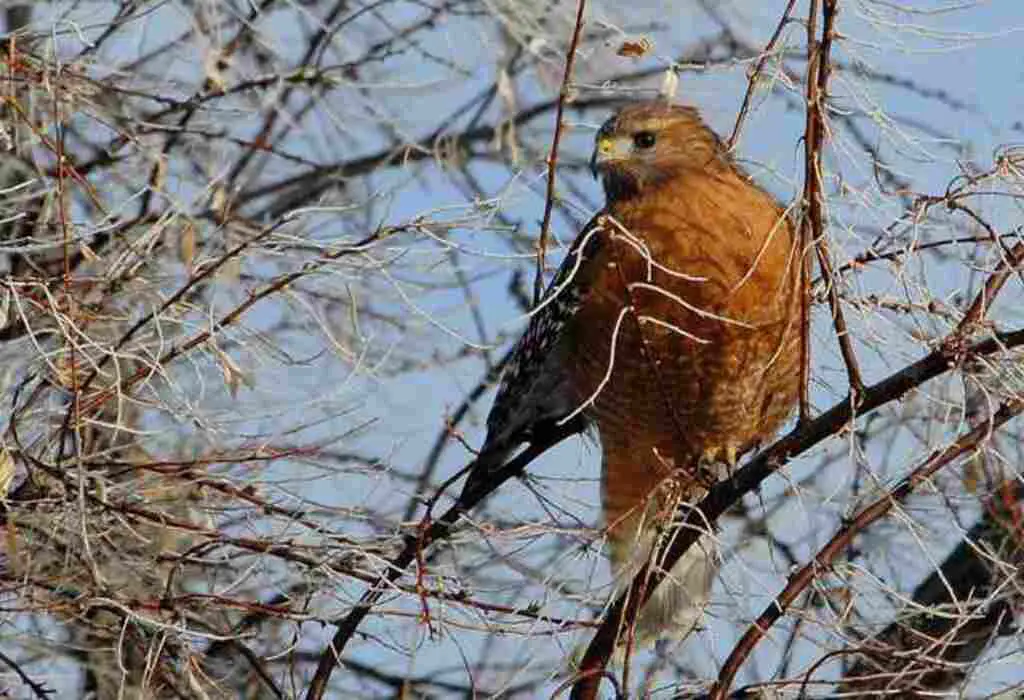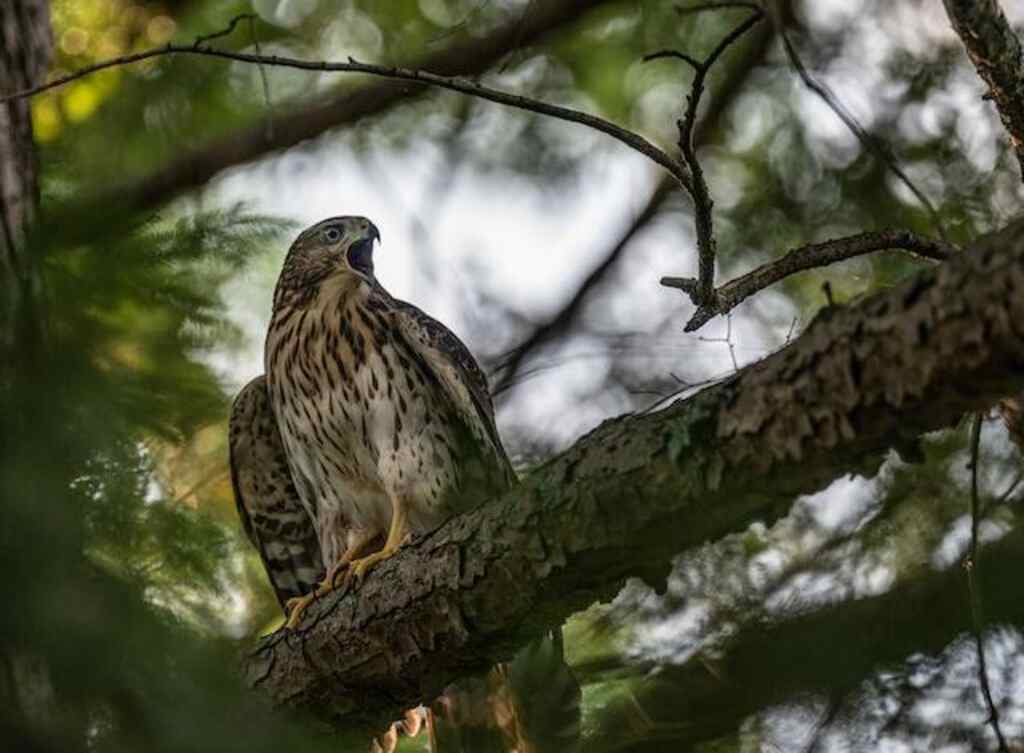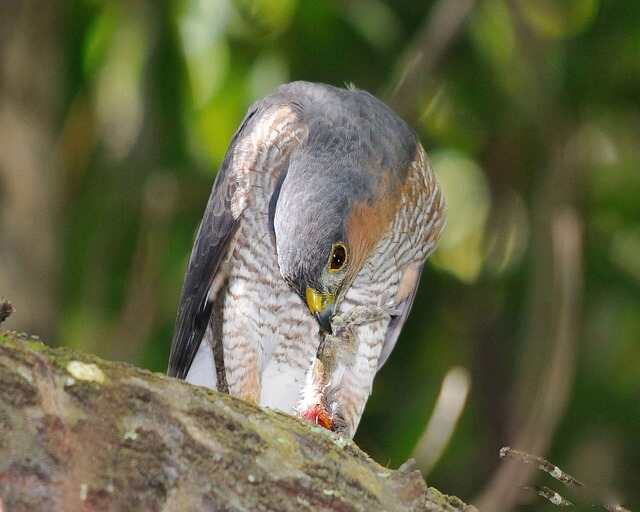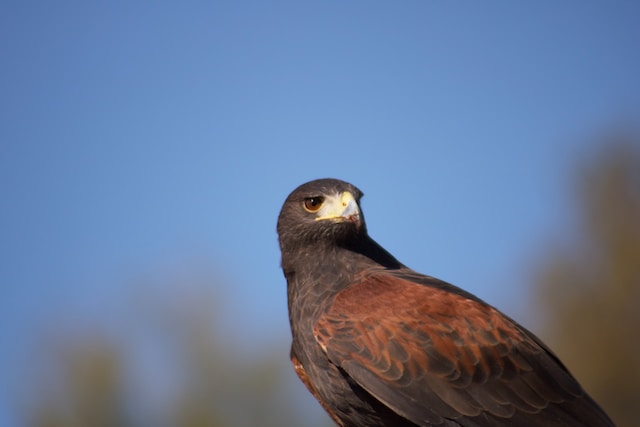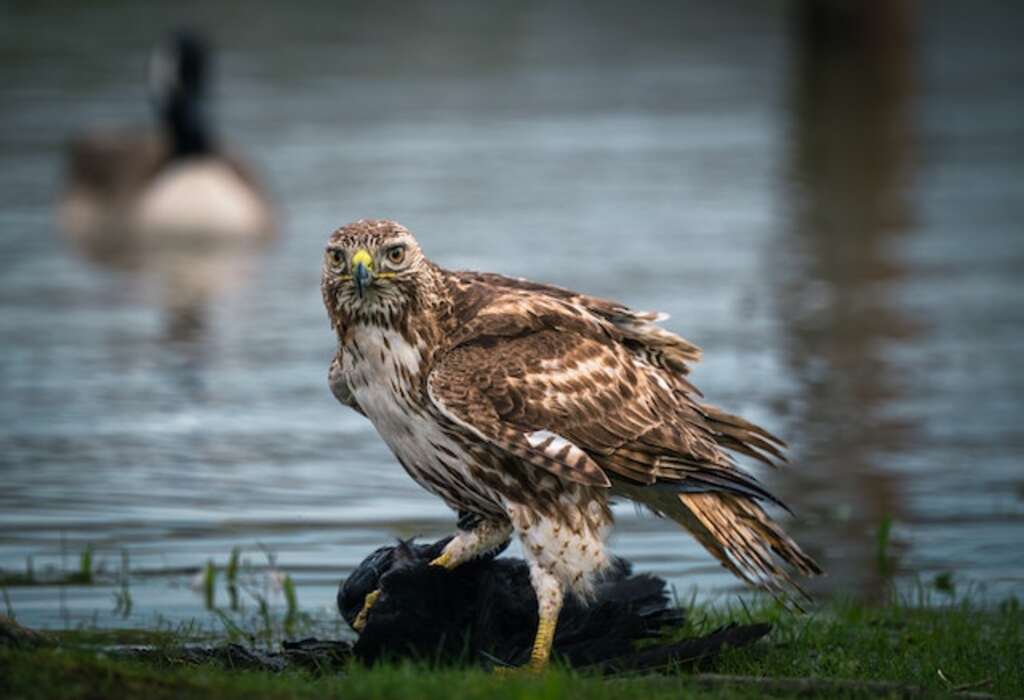Do hawks drink water? It may sound peculiar, but water is just as vital for hawks as it is for any living creature.
Join us on an adventure as we explore the intriguing realm of hawks and unveil the truth behind their hydration habits.
Discover the unique adaptations, physiological requirements, and survival techniques that hawks employ to obtain this essential resource.
Get ready to soar through the captivating world of hawks and their fascinating relationship with water!
Table of Contents
- 1 Key Takeaways
- 2 Do Hawks Drink Water?
- 3 The Importance of Water for Hawks
- 4 The Unique Way Hawks Obtain Water
- 5 Hawk Physiology and Water Needs
- 6 Factors That Affect Hawk Water Intake
- 7 The Role of Water in Hawk Health
- 8 Comparing Hawk Water Needs to Other Birds
- 9 Human Impacts on Hawk Water Sources
- 10 Conservation Efforts to Protect Hawk Water Sources
- 11 Conclusion and Final Thoughts
- 12 Frequently Asked Questions
- 13 Author
Key Takeaways
- Hawks require water to maintain bodily functions and regulate body temperature.
- Hawks can obtain water through various sources such as consuming prey, drinking from puddles and streams, and utilizing dew and rain.
- Temperature, humidity, and availability of prey and water sources can affect hawk water intake.
- Water scarcity can have fatal consequences for hawks, as inadequate water intake can cause serious health issues such as kidney failure and reduced performance.
Do Hawks Drink Water?
Yes, hawks do drink water. While they primarily obtain moisture from the prey they consume, hawks will occasionally drink water from various sources such as rivers, ponds, or rain puddles. Water is vital for their survival and hydration, especially during hot and dry weather conditions.
The Importance of Water for Hawks
Water plays a crucial role in the survival of hawks, as it is essential for maintaining their bodily functions and regulating body temperature in different environmental conditions.
Hawks need water to digest food properly and to flush out waste from their bodies.
In addition, water scarcity can have a significant impact on hawks, especially during migration. Hawks rely on water sources along their migratory routes to replenish their energy stores and stay hydrated.
Lack of water sources can lead to dehydration, which can cause hawks to become weak and unable to continue their journey.
Therefore, water is an essential resource for hawks, and their ability to find and access it can determine their survival.
In the subsequent section, we will explore the unique way hawks obtain water.
The Unique Way Hawks Obtain Water
Hawks have a unique way of obtaining water which is vital for their survival in the wild.
One way they obtain water is by consuming their prey, which contains moisture that can sustain them for a certain period of time.
Additionally, they may drink from puddles and streams when they are available, especially during dry seasons.
Lastly, hawks have been observed utilizing dew and rain as a source of water, which can be crucial for their survival in arid regions.
Obtaining water from prey
One method in which hawks can obtain water is through consuming their prey, which may contain a sufficient amount of moisture to sustain the hawk’s hydration needs.
Hawks have adapted to their environment by consuming prey that contains high amounts of water, such as small mammals and birds.
These prey items not only provide the necessary nutrients for the hawk’s survival, but they also serve as a source of hydration.
Additionally, hawks have the ability to store water in their crops, a muscular pouch located in their throat, allowing them to consume large amounts of water at once and sustain themselves for longer periods without needing to drink.
However, this method of obtaining water can be limited by the availability of prey and the frequency of successful hunts.
In the next section, we will explore another method in which hawks can obtain water, through drinking from puddles and streams.
Drinking from puddles and streams
Consuming prey with high water content is not always a reliable source of hydration for hawks, which is why they have adapted to drinking from natural sources such as puddles and streams.
These alternative water sources are not without their risks, however, as contamination from pollutants or harmful bacteria can lead to illness or death.
Hawks must carefully choose where they drink from, opting for clean and clear water whenever possible.
In addition to being a necessary source of hydration, drinking from puddles and streams can also provide a chance for hawks to cool off in hot weather.
Hawks have evolved to be efficient drinkers, tilting their heads back to allow the water to flow down their throats without getting trapped in their beaks.
As with many aspects of their lives, hawks have found ways to adapt to their environment in order to thrive.
Utilizing dew and rain is another way in which hawks can obtain water, which will be explored in the subsequent section.
Utilizing dew and rain
Utilizing the natural resources of dew and rain can be a vital source of hydration for birds of prey in areas where other sources may be scarce or contaminated.
Dew harvesting, a common technique used by many animals, involves collecting moisture from the atmosphere onto surfaces such as leaves or grass.
This is particularly useful for birds of prey that inhabit arid regions, where water sources are limited.
Rainwater collection is another method that hawks use to obtain water. They can collect water from the surface of plants or rocks during a rainfall event.
This is an efficient way for them to obtain water, as they do not have to expend energy searching for other sources.
The ability to utilize these natural resources is important for hawks, as their physiology requires them to consume a significant amount of water in order to maintain their bodily functions.
Understanding the ways in which hawks obtain water is crucial for their survival in their respective habitats.
Hawk Physiology and Water Needs
Hawks, like all birds, require access to water for proper physiological functioning and maintenance of homeostasis. Hawk hydration is crucial, as these birds rely on water to regulate their body temperature, digestion, and excretion.
However, hawks are known for their ability to conserve water. They are adapted to their arid environments and can obtain most of their water from their prey.
Hawks can also go extended periods without drinking water, relying on metabolic water produced by the breakdown of food in their bodies.
Factors that affect hawk water intake include temperature, humidity, and the availability of prey and water sources.
Understanding hawk physiology and water needs is essential for their conservation and management in the wild.
Factors That Affect Hawk Water Intake
As discussed in the previous subtopic, hawks require water for various physiological functions. However, the amount of water they consume can vary depending on several factors.
The factors affecting hawk water intake include the climate of their habitat, the type of prey they consume, and their activity level.
Hawks living in arid regions require more water than those living in humid regions. Similarly, hawks that consume dry prey such as rodents require more water than those that consume wet prey such as fish.
Furthermore, hawks that are more active require more water due to increased respiration and perspiration.
Climate impact is a significant factor that affects hawk water intake, as water scarcity can lead to dehydration and potentially fatal consequences.
Understanding these factors is crucial to ensure the survival and health of hawks in the wild.
In the subsequent section, we will explore the role of water in hawk health and how it affects their overall well-being.
The Role of Water in Hawk Health
Water plays a critical role in maintaining the optimal health and well-being of hawks, as it facilitates various physiological functions necessary for their survival. These functions include digestion, thermoregulation, and excretion.
Hawks have evolved to be efficient in water conservation due to their natural habitat, which is often arid and dry.
They have developed unique hydration strategies that allow them to survive for long periods without water. For instance, they obtain water from their prey, which is a significant source of hydration for them.
Additionally, hawks have the ability to store water in their crop, which is a pouch found in their throat.
However, despite their water conservation abilities, hawks still require adequate water intake to maintain their health.
Inadequate water intake can lead to dehydration, which can cause serious health issues such as kidney failure and reduced performance.
Thus, it is crucial to ensure that hawks have access to clean and fresh water to maintain their optimal health.
Comparing hawk water needs to other birds will shed more light on the water requirements of these birds.
Comparing Hawk Water Needs to Other Birds
Avian species have varying water requirements, with some being more efficient at water conservation than others. In terms of comparing water consumption, bird species can be categorized into three groups: desert birds, water birds, and land birds.
Desert birds are the most efficient at water conservation, with some species being able to survive without water for weeks.
Water birds, on the other hand, require large amounts of water and are often found near bodies of water such as lakes and rivers.
Land birds fall somewhere in between, requiring water but being able to survive with less than water birds.
When it comes to water sources, availability plays a significant role. Some bird species, including hawks, rely on natural sources such as rivers and lakes.
Human impacts on these water sources, such as pollution and water diversion, can have a detrimental effect on hawk populations.
Human Impacts on Hawk Water Sources
The availability of natural water sources for hawks is greatly impacted by human activities, which can turn once-flowing rivers into barren wastelands.
Human impact on the environment, such as deforestation, urbanization, and industrialization, has led to water scarcity for wildlife.
Hawks, being a predatory bird, rely on watering holes to quench their thirst and to hunt for prey.
However, with the destruction of their habitat, water sources are becoming scarce, leading to a decline in hawk populations.
The effects of human activities on water sources can be devastating, leading to the depletion of aquatic ecosystems and ultimately, affecting the food chain.
As a result, conservation efforts to protect hawk water sources are crucial in ensuring the survival and conservation of these magnificent birds.
Conservation Efforts to Protect Hawk Water Sources
Human activities such as urbanization and agriculture have put a severe strain on hawk water sources, leading to water scarcity and habitat destruction.
To address this issue, conservation efforts have been implemented to protect and preserve these vital resources.
These efforts include the restoration of degraded water sources, the installation of artificial water sources, and the protection of natural water sources through land-use regulations.
Despite these efforts, the conservation of hawk water sources remains a challenge, as human activities continue to threaten these habitats.
To evoke an emotional response in the audience, consider the following table that highlights the impact of water scarcity and habitat destruction on hawk populations:
| Hawk Species | Distribution | Threat Level |
|---|---|---|
| Red-tailed Hawk | North America | Least Concern |
| Cooper’s Hawk | North America | Least Concern |
| Sharp-shinned Hawk | North America | Least Concern |
| Ferruginous Hawk | North America | Threatened |
| Swainson’s Hawk | North America | Threatened |
| Hawaiian Hawk | Hawaii | Endangered |
| Madagascar Fish Eagle | Madagascar | Critically Endangered |
As we can see from this table, several hawk species are at risk due to the destruction of their habitat and water scarcity. It is crucial to continue conservation efforts to protect these magnificent birds and ensure their survival.
In the next section, we will discuss some final thoughts on the importance of hawk water sources and the need for continued conservation efforts.
Conclusion and Final Thoughts
Water is essential for the survival of all living creatures, including hawks. These birds of prey require water to maintain their bodily functions, regulate their body temperature, and aid in digestion.
Hawks have a unique way of obtaining water, as they do not drink water in the traditional sense. Instead, they obtain moisture from their prey, particularly small mammals and insects.
The physiological needs of hawks vary depending on factors such as age, sex, and environmental conditions.
However, it is generally recommended that hawks consume at least 10% of their body weight in water daily.
Factors such as temperature, humidity, and prey availability can affect a hawk’s water intake, making it crucial for these birds to have access to clean, reliable sources of water.
In conclusion, water plays a vital role in the health and survival of hawks.
As humans continue to impact natural water sources through pollution and habitat destruction, conservation efforts must be made to protect these essential resources for the benefit of all living creatures.
As the saying goes, ‘water is life,’ and for hawks and other wildlife, this statement holds true.
Frequently Asked Questions
What is the lifespan of a hawk?
The lifespan of hawks varies due to various factors such as habitat, food availability, and predation. On average, hawks live for 10-20 years. In comparison to other birds of prey, some species of hawks have a longer lifespan.
How many different species of hawks are there?
There are approximately 270 species of hawks worldwide, inhabiting diverse habitats ranging from tropical rainforests to deserts. Many species exhibit seasonal migrations, with some traveling thousands of miles to reach their breeding or wintering grounds.
What is the hunting range of a hawk?
The hunting range of a hawk varies depending on the species, with some having a range of a few square miles while others may cover up to hundreds of square miles. Prey types and hunting techniques also vary between species.
How do hawks communicate with each other?
Hawks communicate with each other through vocalizations and body language. They produce a variety of calls to convey different messages and use postures and movements to signal aggression or courtship. Interesting statistic: Some hawk species can hear sounds up to 10 times better than humans.
Hawks exhibit a monogamous bond with parental roles shared by both sexes. They are territorial and defend their nest site. Social structure varies by species. Hawks are adapted to a free-ranging lifestyle which satisfies their instinctual need for freedom.

